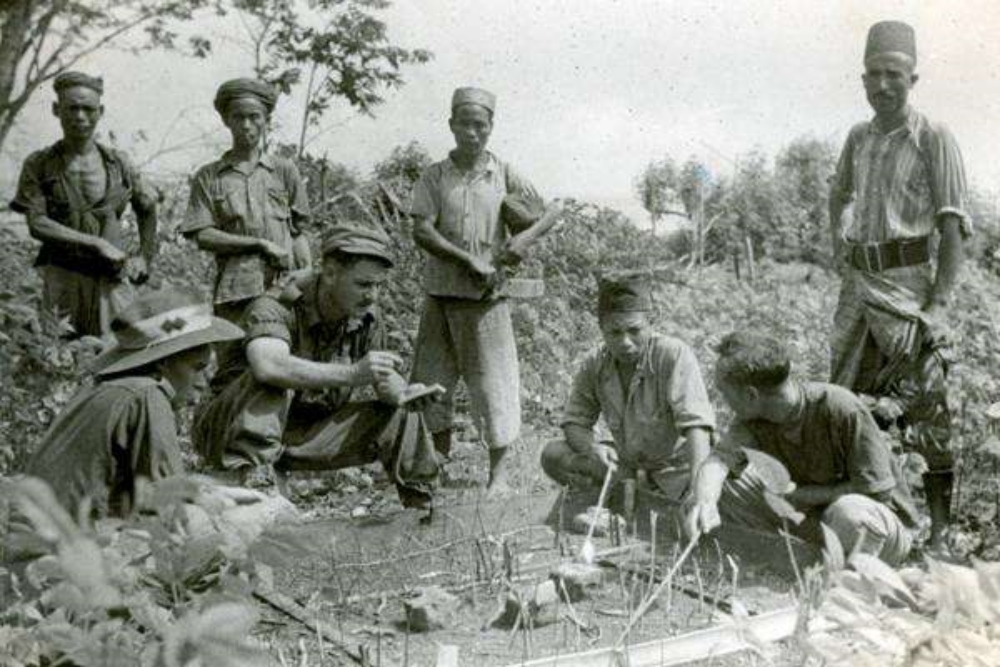
A Z Special Unit member interacting with Borneon locals. – Photo from Australian War Memorial/www.awm.gov.au
MIRI (March 24): The launching of three books, an exhibition and the traditional commemoration service in Bario will be held tomorrow (March 25) to mark the 78th anniversary of the landing of the Z Special Unit in Bario highlands that started the liberation of Sarawak in World War II.
‘A Matter of Trust: Dayaks & Z Special Unit Operatives in Borneo 1945’, an Australian War Memorial Exhibition that explores the work of Dayaks and Z Special Unit operatives in Borneo in bringing about the end of Japanese occupation will be launched at Bario Community Museum.
At the same, three books titled ‘To Kill The Major’ by Paul Malone, ‘Memoirs of Z Special Unit in Bario’ by Jenny Soh, and ‘SEMUT’ by Dr Christine Helliwell, will be launched.
The eye-opening exhibition was initially scheduled to be held in 2020 in conjunction with the 75th anniversary of the landing but it was postponed due to Covid-19 pandemic travel restrictions.
Jointly organised by Rurum Kelabit Sarawak and Miri City Council, the exhibition will be graced by Datuk Gerawat Gala, a local Bario native and Deputy Minister in the Sarawak Premier’s Department, said event coordinator Sampson Bala-Palaba.
“The events include the traditional commemoration service with military excerpts and an exhibition and launching of three books written about this WW2 adventures in Borneo,” he said.
The exhibition focuses on three secret operations carried out by members of the Z Special Unit behind Japanese lines in Borneo in 1945: Operation Agas in the then British North Borneo, Operation Platypus in the then Dutch Borneo and Operation Semut in Sarawak.
Some of the photographs and records by the unit operatives are on display as part of the exhibition, and provide a unique visual record of the island of Borneo and of the people these operatives fought alongside with in 1945.
Jointly curated by Helliwell of the Australian National University and Robyn van Dyk of the Australian War Memorial, the exhibition will be open from March 25 onwards.
It intends to shine the light on the special operations carried out in Japanese-occupied Borneo during World War 2 that saw two remarkable groups of people come together: on the one hand, the operatives of the Z Special Unit, forerunner of today’s SAS and Commando units; and the indigenous Dayak peoples of Borneo.
Neither group ever received the recognition they deserve: the Z Special Unit men because of the highly secretive nature and operation of the unit and because of western memorialisation that overlooks the contributions and sacrifices made by the indigenous peoples on whose soils the war was fought, after WWII ended.
At midnight on March 25, 1945, a reconnaissance party of eight men under the command of Major Tom Harrison set off from their base in the Philippines, heading deep into Sarawak’s remote and uncharted highlands.
The Z-unit men parachuted in close to the longhouse at Bario, and gained the support of the local Kelabit and Lun Bawang people to help with the operation.
Jack Tredrea, a surviving veteran of Operation Semut 1, remembers being issued with a cyanide pill to swallow if he was captured. Tragically, one of the two B24 Liberator bombers that dropped the Semut recce party at Bario never made it back to base.
